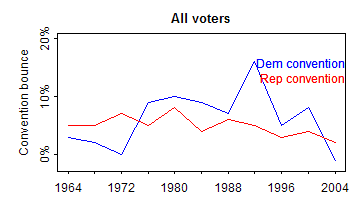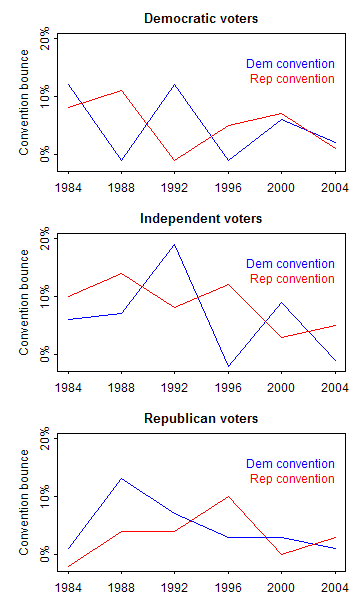Political conventions may not be as exciting as they once were, but they but they still give nominees a jump of about 5 percentage points. The bounce varies from election to election but it is nearly always positive, typically between 0 and 10% in the polls:

Let’s break down the bounce to see what’s happening among self-declared Democrats, Independents, and Republicans in each year. Gallup has data before and after every convention since 1984 broken down by the partisanship of the people polled.

On average, the bounce is positive among all groups, but the largest changes occur among Independents. This makes sense: the 20% or so of voters who identify with neither party are least likely to have already made up their mind and most likely to change their opinions. What is perhaps more of a surprise is that the bounces are, on average, of comparable size for both conventions: we do not see Democratic voters moving more to their party during the Democratic convention, or the Republicans shifting more during their party’s. The conventions are part of a larger campaigning process by which voters learn about the ideological and policy positions of the candidates. What is relevant is the information conveyed rather than the momentary positions of the polls.